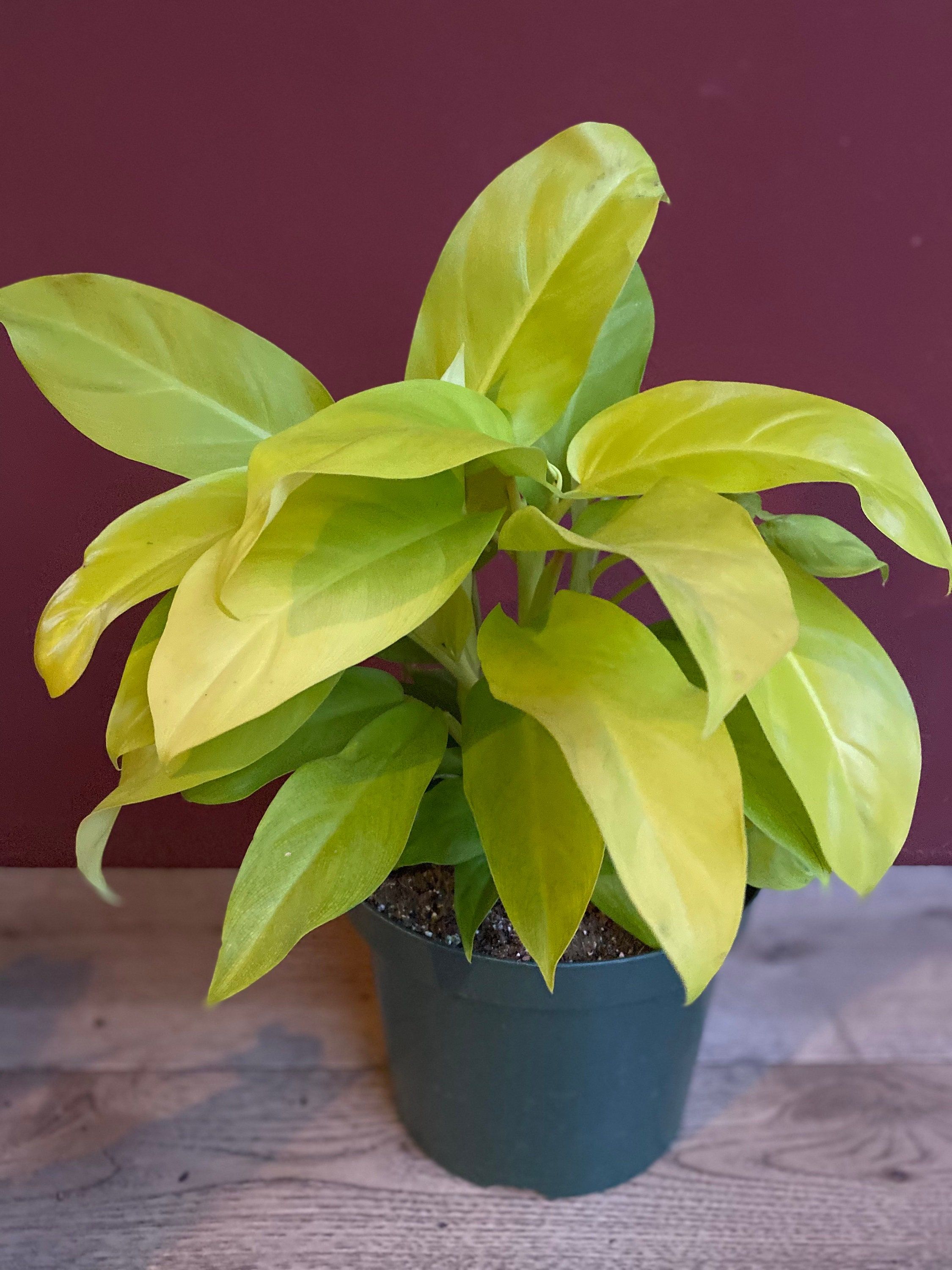Lacerum Philodendron

Lacerum philodendron
Philodendron lacerum is a warm-growing plant that needs around 55 to 80 degrees Fahrenheit at all times. It is not frost-hardy and should always be moved indoors during winters. Also, keep away from open windows and direct air-conditioning when kept inside the house.
What is a lacerum plant?
Lacerum – Giant elephant ear shaped leaves have lobed edges and can get rather large. Green and glossy the leaves grow off of a slightly flatten stem or petioles. A beautiful aroid for any collection. These are very healthy, climbing tropical plants with well established root systems.
Do philodendrons need direct sunlight?
Light: Philodendrons grow best in medium light and bright indirect sunlight. Older leaves turn yellow naturally. However, if you notice several yellow leaves at once, it could be an indicator that the plant is getting too much sun.
Do philodendrons do well indoors?
The reason philodendrons make such good indoor plants is that they adapt to various lighting and water conditions and thrive indoors very well. The plants have large, green, dark leaves which allow them to absorb even the tiniest traces of light and water.
Do philodendrons like to be misted?
Normal household humidity is fine for your Philodendron Birkin, but higher humidity encourages larger leaves. Your plant will benefit from regular misting. Your plant will grow well in temperatures between 70-80 degrees during the day and above 55 degrees at night.
Do philodendrons like to grow up or down?
Give vining types room to roam Show off the charms of vining philodendrons by giving them space and opportunity to grow upwards or cascade down. These ambitious plants can scale a post or other structure. Or they can cascade down when planted in a hanging basket.
What makes a plant an aroid?
What is an Aroid? An aroid is flowering plant in the family Araceae. This plant family is quite impressive, with over 100 genera and approximately 3,700 recognized species. All these plants have a distinctive inflorescence (flower structure) known as a spadix.
Is philodendron a succulent?
NASA lists a Heartleaf Philodendron as a clean air plant that removes formaldehyde, a chemical found in insulation, floor coverings, cleaning agents, pressed wood, and even paper towels, from the air. Looks exactly like its name. This succulent tolerates drought and does best in bright light.
Are philodendrons parasitic?
Philodendron: Greek for tree-loving, in reference to its native growing habit. Most are classified as “epiphytes” or air plants as they grow on other plants and elevated supports. They are not parasites but obtain water and nutrients through a spongy covering of their roots.
How long do philodendrons live for?
Growing philodendrons is easy, and a pleasure for beginner and expert growers alike. They're not too fussy, tolerate variable conditions, and live a long time, upwards of 30 years or more. Sometimes it's amazing to think we can grow plants from a tropical jungle in our home with such ease.
Where should I put my philodendron?
Philodendrons need sun, but they would naturally receive dappled light under a tropical canopy rather than direct light. Indoors, set them up by a window that gets bright, indirect light. Too little light can result in leggy growth with lots of space in between the leaves.
What is the easiest philodendron to grow?
Sometimes known as the sweetheart plant, heart-leaf philodendron (Philodendron cordatum) is one of the easiest houseplants to grow. Give it low light, low humidity and/or irregular watering, and it just keeps right on growing.
Do philodendrons need big pots?
Does my Philodendron need a bigger pot? Philodendrons are very happy in a small pot. In the wild, these plants will be found growing on/around larger trees, and so will have limited soil space.
What pots do philodendrons like?
How to Plant Philodendrons. Choose a glazed ceramic pot, plastic pot, or hanging basket that is 1 to 2 inches larger in diameter than the root ball of your plant.
Do philodendrons like bathrooms?
Philodendron scandens is a South American native that doesn't require much light to thrive. It likes its soil to be kept damp, and while it will tolerate dry conditions, it's a high-humidity plant, making it perfect to keep in a low-light bathroom.
Should I bottom water my philodendron?
7. Philodendron. If you are not careful with philodendron watering, then the foliage may become yellow or green. Bottom watering helps to keep them thriving without any fuss and spot-free!
What does an overwatered philodendron look like?
Overwatered Philodendron Symptoms of overwatering include wilted leaves, even though the soil is moist. New leaves may turn brown and soft. Another sign that overwatering might be the problem is a buildup of visible salts on the soil surface. These salts look like a white, crusty, crystallized layer.
Should I let my philodendron climb?
If you want to add a little height to your planting, you can add a little trellis or post for climbing philodendrons to climb up. The key is to provide a rough surface for the plant to grab onto.
Do philodendrons prefer to be root bound?
Q: Do philodendrons like to be root bound? While philodendrons tolerate being root bound a little better than most houseplants, they don't actually like being root bound. Your plant will be happiest and healthiest if you do repot regularly. Get tips for repotting your houseplants.
Does my philodendron need a moss pole?
Aroids (e.g. Monstera, Philodendron, and Pothos) and similar tropical epiphytic species are a common choice, but anything that's used to climbing trees is going to appreciate a moss pole.













Post a Comment for "Lacerum Philodendron "